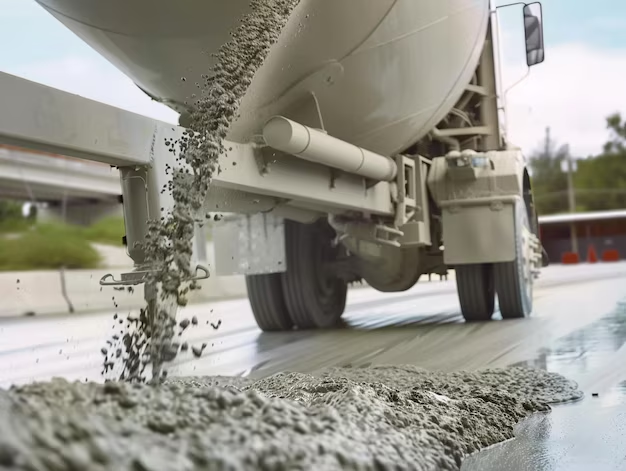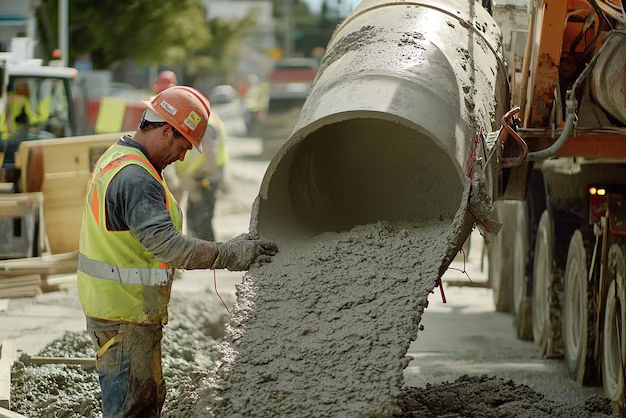There are various concrete mixes for different buildings and that is where concrete grades occur. Higher grade concrete has better strength and better durability than lower grade/ Low grade mix is used normally for small works and high grade concrete for large works.
In this article, we will explore M15 concrete, its components, mix ratio, and applications. Read on to learn everything about M15 concrete.
What is an M15 Concrete Mix?

M15 concrete has a minimum crushing strength of 15 Newtons per millimeter of cube for every ton per square millimetre at 28 days. In the preparation of the ratio 2:4 this implies that for every one measure of cement, two measures of sand and four measures of aggregates. M15 concrete is also a nominal mix concrete which has a fixed proportion to give an approximate quantitiative indication of the contents.
Key Components of M15 Concrete
M15 concrete includes cement, sand, aggregate, and water and proportions are added to obtain the grade of concrete.
- Cement: It also works as a cementing material which also gives strength to the structure as a whole.
- Sand: The fine aggregates are the particles that remain in the voids within the mix giving concrete density and workability.
- Aggregate: Fine aggregates consist of natural or crushed stone particles that pass through the sieve in tests like the Los Angeles Abrasion test.
- Water: In countersinks and blind holes, it wets the material and starts the chemical process that ends with stiffening.
Factors Affecting M15 Concrete Ratio

Although M15 has a nominal mix with a predetermined ratio of 1:2:4, actual amounts may vary due to several factors:
- Properties of Each Material: The quality of cement, sand fineness, moisture content, and aggregate size can impact the water-cement ratio and overall mix proportions.
- Exposure Conditions: Weather conditions can influence mix ratios.
- Compressive Strength Requirements: Depending on project specifications, desired compressive strength can alter material proportions.
- Admixtures: Additives like water reducers or plasticizers can modify concrete properties and proportions.
- Workability: The ease of mixing, placing, and compacting can affect the water and admixture amounts.
M15 Concrete Applications
M15 concrete is of moderate strength, suitable for various applications, including:
- Pavements or pathways
- Plastering walls and ceilings
- Beams, flooring, lintels, and leveling
- Stairs and steps
- Small-scale foundations
- Farm sheds and water tanks
M15 Concrete Ratio
The standard mix ratio for M15 concrete is 1:2:4, which translates to:
- 1 part cement
- 2 parts sand (fine aggregate)
- 4 parts aggregate (coarse aggregate)
This ratio balances strength, durability, and workability effectively.
Standard Concrete Mix Ratios
The following table illustrates various concrete grades, mix ratios, and compressive strengths:
| Concrete Grade | Mix Ratio | Compressive Strength |
| M5 | 1:5:10 | 5 MPa (725 psi) |
| M7.5 | 1:4:8 | 7.5 MPa (1087 psi) |
| M10 | 1:3:6 | 10 MPa (1450 psi) |
| M15 | 1:2:4 | 15 MPa (2175 psi) |
| M20 | 1:1.5:3 | 20 MPa (2900 psi) |
| M25 | 1:1:2 | 25 MPa (3625 psi) |
Tips for Successful M15 Concrete Mixing
To ensure a stable and durable building, consider the following tips for mixing M15 concrete:
- Add parts by volume in the right combinations depending on the given ratio.
- For better and accurate measurements, and then it is recommended to use the weighing machines.
- Ensure that the water cement ratio is.correct and mixed for equitable distribution.
- High Quality Materials which has to be free from any contaminants that can enter into the mixture.
- After the above steps, cover the concrete mix with burlap bags or plastic sheets so that the concrete doesn’t dry so quickly.
Conclusion
M15 concrete is utilized where moderate strength is required, with a nominal mix ratio of 1:2:4 (one part cement, two parts sand, and four parts aggregate). Walls and Dreams Despite the unalterable 1:1:2:2 mix ratio, different circumstances could affect the composition of materials. Walls and Dreams From the above information, one has to check all the conditions and decide on the amount of each material to be used. Walls and Dreams If you have any questions or worries, consulting an expert is useful.
FAQs
- What is a nominal mix ratio?
Nominal mix ratio does not change and are approximations of the quantity of materials needed to prepare concrete. - What are the proportions for concrete of grade M10, M15 and M20?
The concrete mix ratios are:
M10: 1:3:6
M15: 1:2:4
M20: 1:1.5:3 - What does M15 concrete mean?
M15 concrete has a compressive strength of 15 N/mm² after 28 days of curing, with a standard mix ratio of 1:2:4 (1 cement : 2 sand, 4 aggregates).








